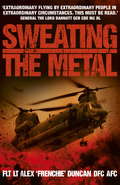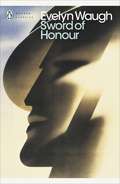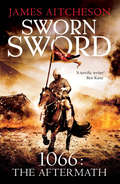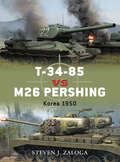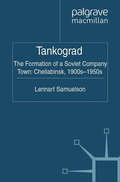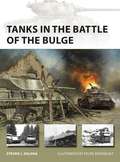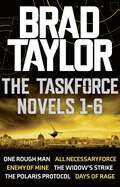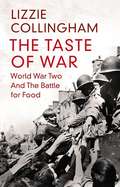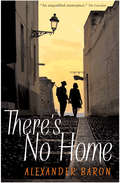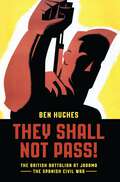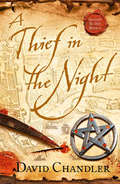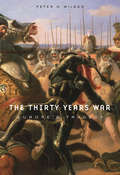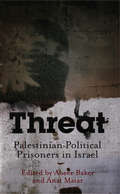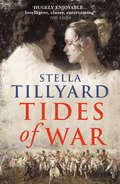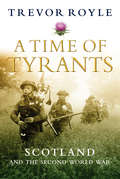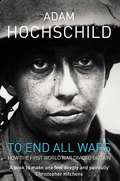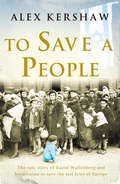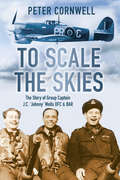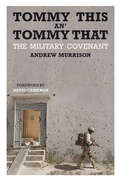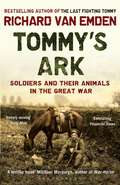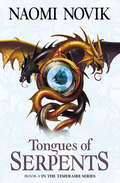- Table View
- List View
Supermarine Spitfire (large print)
by RnibThis page shows two images of an aircraft. At the top of the page seen from the side and in the bottom and middle of the page a plan view seen from above. There is a locator dot shown, which will be at the top left of the page when the image is the correct way up. Both views have the front on the left and the tail on the right of the page. The aircraft is shown in a flying position so the wheels are retracted and not shown. The aircraft in the top of the page has the propeller on the left with one blade pointing up and one pointing down. The nose cone is pale grey. Right from this is a rectangle which comprises six exhaust outlets. Down and right from the exhaust is the tip of the wing pointing towards you. The front edge on the left has a cannon sticking out. Up from the wing in the middle top of the fuselage is the cockpit cover shown as two windows. The centre of the fuselage has letters identifying which individual aircraft it is. There is also red and blue roundel indicating the plane belongs to the RAF. On the top edge of the fuselage there is an aerial sticking up. Right of this the fuselage continues to the vertical tail fin on the right. At base of the fin is the end of one of the tail wings. Right of this is a vertical flap. This is one of the ailerons used to manoeuvre the aircraft when it is flying. The tail has a red rectangle and a blue rectangle separated by a white line indicating the plane belongs to the RAF. In the plan view image in the bottom and middle of the page the fuselage goes from left to right in the centre of the image. The main wings go up and down the page from the fuselage. In the left of the page the propeller has one blade pointing up and one pointing down. The tip of the nose cone is pale grey. To the right of the propeller six exhaust outlets can be found on the top and bottom edge of the fuselage. Right of this are the wings. Each wing has two cannons mounted on the front edge. In the centre of each wing there is a red and blue roundel indicating the plane belongs to the RAF. On the right of each wing tip is a flap. These are two of the ailerons used to manoeuvre the aircraft when it is flying. In the centre of the fuselage between the wings is the cockpit shown as two windows. The fuselage continues to the right ending in the tailplane. On the right of each tail wing is a flap. These are two more of the ailerons used to manoeuvre the aircraft when it is flying.
Supermarine Spitfire (UEB contracted)
by RnibThis page shows two images of an aircraft. At the top of the page seen from the side and in the bottom and middle of the page a plan view seen from above. There is a locator dot shown, which will be at the top left of the page when the image is the correct way up. Both views have the front on the left and the tail on the right of the page. The aircraft is shown in a flying position so the wheels are retracted and not shown. The aircraft in the top of the page has the propeller on the left with one blade pointing up and one pointing down. The nose cone is pale grey. Right from this is a rectangle which comprises six exhaust outlets. Down and right from the exhaust is the tip of the wing pointing towards you. The front edge on the left has a cannon sticking out. Up from the wing in the middle top of the fuselage is the cockpit cover shown as two windows. The centre of the fuselage has letters identifying which individual aircraft it is. There is also red and blue roundel indicating the plane belongs to the RAF. On the top edge of the fuselage there is an aerial sticking up. Right of this the fuselage continues to the vertical tail fin on the right. At base of the fin is the end of one of the tail wings. Right of this is a vertical flap. This is one of the ailerons used to manoeuvre the aircraft when it is flying. The tail has a red rectangle and a blue rectangle separated by a white line indicating the plane belongs to the RAF. In the plan view image in the bottom and middle of the page the fuselage goes from left to right in the centre of the image. The main wings go up and down the page from the fuselage. In the left of the page the propeller has one blade pointing up and one pointing down. The tip of the nose cone is pale grey. To the right of the propeller six exhaust outlets can be found on the top and bottom edge of the fuselage. Right of this are the wings. Each wing has two cannons mounted on the front edge. In the centre of each wing there is a red and blue roundel indicating the plane belongs to the RAF. On the right of each wing tip is a flap. These are two of the ailerons used to manoeuvre the aircraft when it is flying. In the centre of the fuselage between the wings is the cockpit shown as two windows. The fuselage continues to the right ending in the tailplane. On the right of each tail wing is a flap. These are two more of the ailerons used to manoeuvre the aircraft when it is flying.
Supermarine Spitfire (UEB uncontracted)
by RnibThis page shows two images of an aircraft. At the top of the page seen from the side and in the bottom and middle of the page a plan view seen from above. There is a locator dot shown, which will be at the top left of the page when the image is the correct way up. Both views have the front on the left and the tail on the right of the page. The aircraft is shown in a flying position so the wheels are retracted and not shown. The aircraft in the top of the page has the propeller on the left with one blade pointing up and one pointing down. The nose cone is pale grey. Right from this is a rectangle which comprises six exhaust outlets. Down and right from the exhaust is the tip of the wing pointing towards you. The front edge on the left has a cannon sticking out. Up from the wing in the middle top of the fuselage is the cockpit cover shown as two windows. The centre of the fuselage has letters identifying which individual aircraft it is. There is also red and blue roundel indicating the plane belongs to the RAF. On the top edge of the fuselage there is an aerial sticking up. Right of this the fuselage continues to the vertical tail fin on the right. At base of the fin is the end of one of the tail wings. Right of this is a vertical flap. This is one of the ailerons used to manoeuvre the aircraft when it is flying. The tail has a red rectangle and a blue rectangle separated by a white line indicating the plane belongs to the RAF. In the plan view image in the bottom and middle of the page the fuselage goes from left to right in the centre of the image. The main wings go up and down the page from the fuselage. In the left of the page the propeller has one blade pointing up and one pointing down. The tip of the nose cone is pale grey. To the right of the propeller six exhaust outlets can be found on the top and bottom edge of the fuselage. Right of this are the wings. Each wing has two cannons mounted on the front edge. In the centre of each wing there is a red and blue roundel indicating the plane belongs to the RAF. On the right of each wing tip is a flap. These are two of the ailerons used to manoeuvre the aircraft when it is flying. In the centre of the fuselage between the wings is the cockpit shown as two windows. The fuselage continues to the right ending in the tailplane. On the right of each tail wing is a flap. These are two more of the ailerons used to manoeuvre the aircraft when it is flying.
Sweating the Metal: Flying under Fire. A Chinook Pilot's Blistering Account of Life, Death and Dust in Afghanistan
by Alex DuncanWith bullets flying, wounded soldiers scream out in pain as the Chinook comes in to land in one of the most dangerous parts of Afghanistan. At the machine's controls is one man and if he doesn't stay calm then everyone could die. That man is Flt Lt Alex 'Frenchie' Duncan DFC and he's been involved in some of the most daring and dangerous missions undertaken by the Chinook force in Afghanistan. In this book he recounts his experiences of life under fire in the dust, heat and bullets of an active war zone. At 99ft long, the Chinook is a big and valuable target to the Taliban, who will stop at nothing to bring one down. And yet Frenchie and his crew risk everything because they know that the troops on the front line are relying on them. Sweating the Metal is the true story of the raw determination and courage of men on the front line - and it's time for their story to be told.
Sword of Honour (Penguin Modern Classics)
by Evelyn Waugh Angus CalderWaugh’s own unhappy experience of being a soldier is superbly re-enacted in this story of Guy Crouchback, a Catholic and a gentleman, commissioned into the Royal Corps of Halberdiers during the war years 1939–45. High comedy – in the company of Brigadier Ritchie-Hook or the denizens of Bellamy’s Club – is only part of the shambles of Crouchback’s war. When action comes in Crete and in Yugoslavia, he discovers not heroism, but humanity.Sword of Honour combines three volumes: Officers and Gentlemen, Men at Arms and Unconditional Surrender, which were originally published separately. Extensively revised by Waugh, they were published as the one-volume Sword of Honour in 1965, in the form in which Waugh himself wished them to be read.
Sworn Sword: 1066 - The Aftermath (The Conquest #1)
by James AitchesonJanuary 1069. Less than three years have passed since Hastings and the death of the usurper, Harold Godwineson. In the depths of winter, two thousand Normans march to subdue the troublesome province of Northumbria. Tancred a Dinant, an ambitious and oath-sworn knight and a proud leader of men, is among them, hungry for battle, for silver and for land.But at Durham the Normans are ambushed in the streets by English rebels. In the battle that ensues, their army is slaughtered almost to a man. Badly wounded, Tancred barely escapes with his life. His lord is among those slain.Soon the enemy are on the march, led by the dispossessed prince Eadgar, the last of the ancient Saxon line, who is determined to seize the realm he believes is his. Yet even as Tancred seeks vengeance for his lord's murder, he finds himself caught up in secret dealings between a powerful Norman magnate and a shadow from the past.As the Norman and English armies prepare to clash, Tancred begins to uncover a plot which harks back to the day of Hastings itself. A plot which, if allowed to succeed, threatens to undermine the entire Conquest. The fate of the Kingdom hangs in the balance ...
T-34-85 vs M26 Pershing: Korea 1950 (Duel #32)
by Steven J. Zaloga Richard ChasemoreA hotly-debated topic amongst tank buffs is of the relative merits of the Soviet and American tanks of World War II. Using recently revealed documents, Steven Zaloga sheds light on the crucial tank battles of the Korean War as the rival superpowers' finest tanks battled for supremacy. The Soviet-equipped North Korean Peoples Army initially dominated the battlefield with the seemingly unstoppable T34-85. As US tank battalions hastily arrived throughout the late summer and early autumn of 1950, the M26 Pershing took the fight to North Korea with increasing success.
Tank Spotter’s Guide (General Military Ser.)
by The Tank MuseumInvented during World War I to break the grim deadlock of the Western Front trenches, tanks have gone on to revolutionise warfare. From the lightning Blitzkrieg assaults of World War II to the great battles in the Middle Eastern desert and the largest ever tank battles on the Eastern Front, tanks have become one of the key components of the 'combined arms' philosophy of warfare. This pocket guide gives the reader all of the essential information on 40 of history's premiere tanks, including the Tiger, Sherman, Panther and M1A1 Abrams. Each tank is presented with a detailed drawing to aid recognition.
Tankograd: The Formation of a Soviet Company Town: Cheliabinsk, 1900s-1950s
by L. SamuelsonA major production site of Soviet KV and T-34 tanks in WWII, the town of Cheliabinsk in the Urals was nicknamed 'Tankograd', its civilian machine-building factories swiftly converted to arms production. This book gives a social, economic and political panorama that describes everyday life in a typical Soviet company town during the Stalin era.
Tanks in the Battle of the Bulge: U. S. Army Tank Combat In The European Theater From D-day To The Battle Of Bulge (New Vanguard #281)
by Steven J. ZalogaThe Battle of the Bulge raises many questions which, until now, have not been adequately answered: How did the major tank types perform during the battle? What were the specific 'lessons learned' from the combat? And did these lessons result in changes to tanks in the subsequent months? Offering detailed answers to these questions, and many more, this book provides a survey of the principal tank and tank-equivalents (such as tank destroyers and Jagdpanzers) that took part in the Ardennes Campaign of December 1944–January 1945. Beginning with a basic overview of the campaign, accompanied by an order of battle of the major armoured units, it examines the opposing forces, covering the organization of the two tank forces to explain how they were deployed. Author Steven Zaloga also scrutinises the technical balance between the opposing sides, comparing armour, mobility and firepower as well as other important factors such as reliability, crew situational awareness, and tank layout/efficiency. Full of specially commissioned and highly accurate artwork plates of the tanks themselves, as well as fascinating technical data based on cutting-edge research, this title is the definitive guide to tank warfare in the Battle of the Bulge.
Taskforce Novels 1-6 Boxset: gripping novels from ex-Special Forces Commander Brad Taylor
by Brad Taylor'Fresh plot, great actions, and Taylor clearly knows what he is writing about' VINCE FLYNN They're the US Government's secret weapon. They call them the Taskforce. Designed to operate outside the bounds of law, trained to exist on the ragged edge of human capability, their existence is as essential as it is illegal. Recruited from the top operators in the intelligence and special forces spheres, they are led by ex-Special Forces Operator Pike Logan and his protégé, academic turned skilled operator, Jennifer Cahill.Threats never cease; the Taskforce never rests. Written by an ex-special forces operator, the Taskforce books are contemporary, realistic and authentic. On a global stage, the Taskforce team must counter cyber-threats, bio-weapons, assassins, rogue operators, narcotic cartels, coups, kidnappers and political conspiracies.Collected in a single volume for the first time, read the first six Taskforce novels:ONE ROUGH MAN The Taskforce reinstates their dismissed operator, Pike Logan, with one chance to redeem himself: find an unknown enemy, with an unknown target in an unknown location.ALL NECESSARY FORCE The Taskforce faces an impossible decision: how to prevent a bomb detonating in the US, the one country it cannot operate in.ENEMY OF MINE Unless the Taskforce eliminates a professional killer, the American envoy responsible for a treaty between Israel and Palestine will be assassinated.THE WIDOW'S STRIKE The Taskforce confronts the Black Widows – female suicide terrorists – in Thailand, who threaten to unleash a genetically manipulated virus.THE POLARIS PROTOCOL The Taskforce infiltrates a Mexican drug cartel who are exploiting a GPS hack capable of bringing the world to a standstill.DAYS OF RAGE The Taskforce must neutralise a weapon of mass destruction that Russia has supplied to Islamic fundamentalists.Praise for Brad Taylor: 'It's an excellent read, and I greatly enjoyed it' NELSON DeMILLE'Pike ranks right up there with Jason Bourne, Jack Reacher and Jack Bauer' JOHN LESCROART'Logan is a tough, appealing hero you're sure to root for' JOSEPH FINDER
The Taste of War: World War Two and the Battle for Food
by Lizzie CollinghamFood, and in particular the lack of it, was central to the experience of the Second World War. In this richly detailed and engaging history, Lizzie Collingham establishes how control of food and its production is crucial to total war. How were the imperial ambitions of Germany and Japan - ambitions which sowed the seeds of war - informed by a desire for self-sufficiency in food production? How was the outcome of the war affected by the decisions that the Allies and the Axis took over how to feed their troops? And how did the distinctive ideologies of the different combatant countries determine their attitudes towards those they had to feed?Tracing the interaction between food and strategy, on both the military and home fronts, this wide-ranging, gripping and dazzlingly original account demonstrates how the issue of access to food was a driving force within Nazi policy and contributed to the decision to murder hundreds of thousands of 'useless eaters' in Europe. Focusing on both the winners and losers in the battle for food, this book brings to light the striking fact that war-related hunger and famine was not only caused by Nazi Germany and Imperial Japan, but was also the result of Allied mismanagement and neglect, particularly in India, Africa and China. American dominance both during and after the war was not only a result of the United States' immense industrial production but also of its abundance of food. This book traces the establishment of a global pattern of food production and distribution and shows how the war subsequently promoted the pervasive influence of American food habits and tastes in the post-war world. A work of great scope, The Taste of War connects the broad sweep of history to its intimate impact upon the lives of individuals.
There's No Home
by Alexander BaronIt's 1943. The allied invasion of Sicily. In a lull in the fighting, a British battalion march through the summer heat into the bombed-out city of Catania, to be greeted by the women, children and old men who remain there. Yearning for some semblance of home life, the men begin to fill the roles left by absent husbands and fathers. Unlikely relationships form; tender, exploitative even cruel, and each doomed to end when the battalion moves on. Many lives interleave in There's No Home but at its heart is the love that develops between Graziella, a bright young mother, and Sergeant Craddock, whose faltering Italian and rough attempts at seduction mask a deeper sympathy. In this sensitive and authentic portrayal of men and women thrown together by chance and conflict, Baron offers us a rare insight into the emotional impact of war.
They Shall Not Pass: The British Battalion at Jarama - The Spanish Civil War (General Military Ser.)
by Ben HughesIn 1937 a group of idealistic British volunteers sailed from England to fight the dark threat of dictatorship in Spain. In the olive groves of Jarama, near Madrid, they achieved the first victory against Franco's army. It was Fascism's first defeat. Hardly remembered today, it proved a crucial military turning point in the fight against Fascism. For the first time, Ben Hughes reconstructs the battle in a vivid blow-by-blow account, and considers its fascinating aftermath.
A Thief in the Night: Book Two Of The Ancient Blades Trilogy (Ancient Blades Trilogy #2)
by David ChandlerEnter a world of darkness and danger, honour, daring and destiny in David Chandler’s magnificent epic trilogy: The Ancient Blades. It takes a thief to destroy a demon…
The Thirty Years War: Europe's Tragedy
by Peter H. WilsonA deadly continental struggle, the Thirty Years War devastated seventeenth-century Europe, killing nearly a quarter of all Germans and laying waste to towns and countryside alike. Peter Wilson offers the first new history in a generation of a horrifying conflict that transformed the map of the modern world.
Threat: Palestinian Political Prisoners in Israel
by Anat Matar Abeer BakerPalestinian prisoners charged with security-related offences are immediately taken as a threat to Israel's security. They are seen as potential, if not actual, suicide bombers. This stereotype ignores the political nature of the Palestinian prisoners' actions and their desire for liberty. *BR**BR*By highlighting the various images of Palestinian prisoners in the Israel-Palestine conflict, Abeer Baker and Anat Matar chart their changing fortunes. Essays written by prisoners, ex-prisoners, Human rights defenders, lawyers and academic researchers analyse the political nature of imprisonment and Israeli attitudes towards Palestinian prisoners. These contributions deal with the prisoners' status within Palestinian society, the conditions of their imprisonment and various legal procedures used by the Israeli military courts in order to criminalise and de-politicise them. Also addressed are Israel's breaches of international treaties in its treatment of the Palestinian prisoners, practices of torture and solitary confinement, exchange deals and prospects for release. *BR**BR*This is a unique intervention within Middle East studies that will inspire those working in human rights, international law and the peace process.
Tides of War: A Novel Of The Peninsular War
by Stella TillyardNewly-wed Harriet stands poised on the threshold of the adult world. Her husband, James, is setting off to join the Duke of Wellington's troops in Spain and left alone in London, Harriet is taken under the wing of Lady Wellington. While Harriet plunges into a new life of freedom at home, James faces the bloody reality of the battlefield. As war rages abroad and England stands on the brink of change, Harriet and James face hope and heartache in equal measure. From the mantillas and palms of Seville to the gas lamps of foggy London, Tides of War returns us to the vivid, lost world of the past.
A Time of Tyrants: Scotland and the Second World War
by Trevor RoyleIn this book acclaimed military historian Trevor Royle examines Scotland's role in the Second World War from a wide range of perspectives. Throughout the conflict the country's geographical position gave it great strategic importance for importing war matériel and reinforcements, for conducting naval and aerial operations against the enemy and for training regular and specialist SOE and commando forces. Scotland also became a social melting pot with the arrival of Polish and numerous European refugees, whose presence added to the communal mix and assisted post-war reconstruction. The role played by women was also essential to the war effort: for the first time they were conscripted and worked on the land, in forests and in munitions factories such as the huge Rolls-Royce complex at Hillington. In addition to the important military aspects - the exploits of the Army's renowned 15th Scottish, 51st Highland and 52nd Lowland Divisions in Europe and North Africa and the role played by the RAF and the Royal Navy from Scottish bases, for example - Scotland was also vital as an industrial powerhouse and acted as the nation's larder. Culture, too, flourished, with a new generation of poets supporting Hugh MacDiarmid's Scottish Renaissance movement, which promoted the aims of Scots as a literary language. At the end of the war the new sense of internationalism encouraged the creation of the Edinburgh International Festival, which encapsulated the optimism that a brave new world was emerging. The war had a huge impact on politics, with national centralization achieved through the Scottish Office and the Scottish Grand Committee under the able guidance of Secretary of State Tom Johnston, who launched numerous initiatives to help the war effort and to create jobs. With the emergence of the post-war Labour government and the welfare state, nationalism went into decline and the dominance of socialism, especially in the west, paved the way for the command politics which dominated Scotland for the rest of the century. Based on previously unseen archives in the National Archives of Scotland, A Time of Tyrants is the first comprehensive history of the unique part played by Scotland and the Scots in the global war to defeat Nazi Germany and Imperial Japan.
To End All Wars: How the First World War Divided Britain
by Adam HochschildIn this brilliant new work of history, Adam Hochschild follows a group of characters connected by blood ties, close friendships or personal enmities and shows how the war exposed the divisions between them. They include the brother and sister whose views on the war could not have been more diametrically opposed – he a career soldier, she a committed pacifist; the politician whose job was to send young men who refused conscription to prison, yet whose godson was one of those young men and the suffragette sisters, one of whom passionately supported the war and one of whom was equally passionately opposed to it. Through these divided families, Hochschild paints a vivid picture of Britain poised between the optimism of the Victorian era and the era of Auschwitz and the Gulag – a divided country, fractured by the seismic upheaval of the Great War and its aftermath.
To Save a People
by Alex KershawNew York Times bestselling author Alex Kershaw has written the first full biography of one of the most remarkable men to have outwitted Hitler - Raoul Wallenberg, the young Swedish diplomat who almost single-handedly saved the lives of countless Hungarian Jews, at unimaginable risk and great cost to himself. As a Holocaust survivor said, 'Schindler saved hundreds. Wallenberg saved tens of thousands.' This is the story of how he achieved this and of his personal duel with Adolf Eichmann, the SS colonel charged with obliterating Hungarian Jewry, who sent half a million Jews to their deaths in Auschwitz. This confrontation reaches its climax in 1944 when Soviet and German troops are fighting hand-to-hand through the suburbs of Budapest and Eichmann's push for the Final Solution is personally opposed by Wallenberg. The book also sheds new light on Wallenberg's fate - he disappeared into the Soviet Union after the war to a highly controversial and disputed death. (The Americans were so determined to discover what happened to him that they made him an honorary citizen in order to prise information out of the Russians.) It's an inspiring story which moves at the pace of a master thriller-writer, but the truth behind it is heartbreaking.
To Scale the Skies: The Story of Group Captain J.C. 'Johnny' Wells DFC and BAR
by Peter CornwellWith humble beginnings as an RAF apprentice, Johnny Wells progressed to pilot and rose to the higher echelons of command at the Air Ministry. From idyllic pre-war training, he would fly bombers against rebels over Iraq, combat Fw190s over England in the newly introduced and equally dangerous Typhoon; he would undertake hazardous low-level anti-shipping strikes in the English Channel, as well as train-busting sorties over occupied territory at night and close-support ground-attack operations across northern Europe following D-Day. Indeed, Wells ended the Second World War as one of the most successful and highly decorated Typhoon Wing Leaders in the Tactical Air Force. This well-researched account of one man's rise through the ranks of the Air Ministry is finely illustrated with contemporary images and is an excellent testimony of what was required of air pilots during the Second World War. Wells' story is both an inspiration and a gripping account of one man's journey through a service career spanning more than three turbulent decades.
Tommy This an' Tommy That: The military covenant
by Andrew MurrisonThere is nothing new about the military covenant, a freshly minted term for something that's been around for as long as soldiering itself. 'Tommy' may have to make the ultimate sacrifice for his country. But what will his country do for him? Over centuries the covenant has been variously honoured and ignored. Confronted daily with flag-draped coffins, shameful stories of inadequate kit and shocking images of the fighting in Iraq and Afghanistan: what exactly are we doing to honour those who sacrifice all in the service of their country? In Tommy This an' Tommy That Andrew Murrison uses his perspective as a senior Service doctor and frontline politician to set the events of the past ten years in historical context. He charts the ways in which societal and political changes have impacted on the wellbeing of uniformed men and women, and the nation's changing sense of obligation towards the military. Crucially he asks what the future holds for the military covenant.
Tommy's Ark: Soldiers and their Animals in the Great War
by Richard Van EmdenFor soldiers in the Great War, going over the top was a comparatively rare event; much more frequently, they were bored and lonely and missing their families at home. Needing an outlet for their affection, many found it in the animal kingdom. Tommy's Ark looks at the war through the eyes of the soldiers who were there, and examines their relationship with a strange and unexpected range of animal life, from horses, dogs and cats to monkeys and birds - even in one case a golden eagle.Animals became mascots - some Welsh battalions had goats as mascots, some of the Scots had donkeys. And then there were the animals and insects that excited curiosity amongst men drawn into the army from the industrial heartlands of Britain, men who had little knowledge of, let alone daily contact with, wildlife. Civilians turned soldiers observed the natural world around them, from the smallest woodlouse to voles, mice and larger animals such as deer and rabbit.Richard van Emden explores his subject far more radically than previous attempts, revealing how, for example, a lemur was taken on combat missions in the air, a lion was allowed to pad down the front line trenches and how a monkey lost its leg during the fighting at Delville Wood on the Somme.Illustrated with more than sixty previously unseen or rarely published photographs, drawn mainly from the author's own extraordinary collection.
Tongues of Serpents (The Temeraire Series #6)
by Naomi NovikNaomi Novik’s stunning series of novels follow the global adventures of Captain William Laurence and his fighting dragon Temeraire as they are thrown together to fight for Britain during the turbulent time of the Napoleonic Wars.

